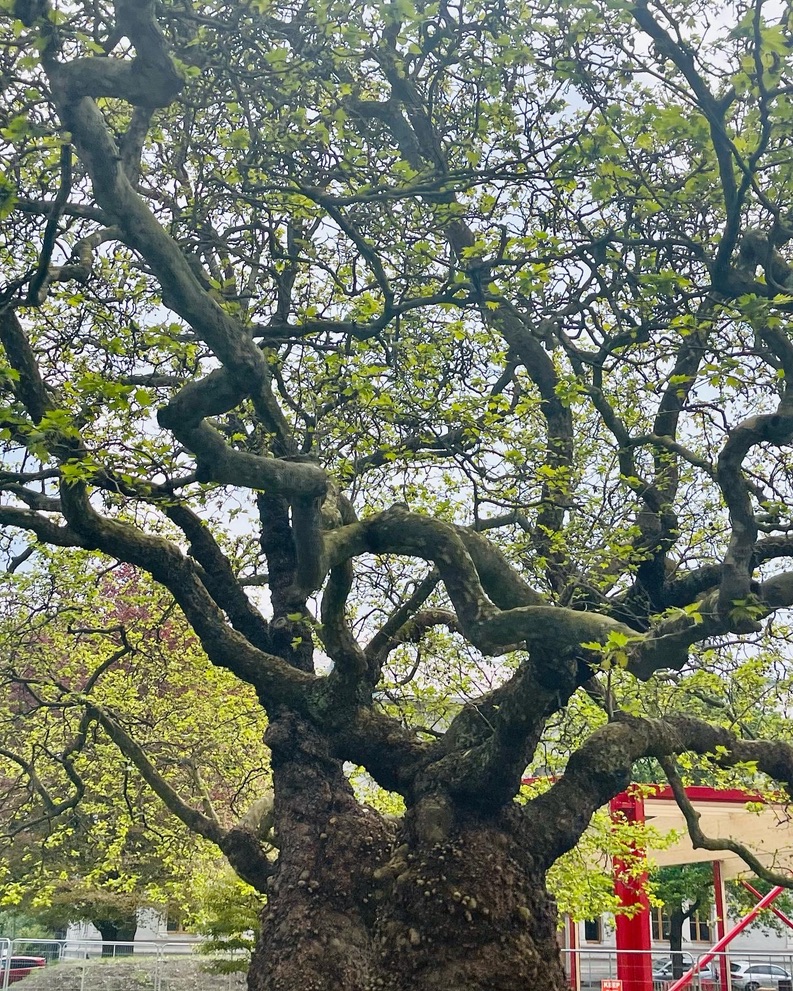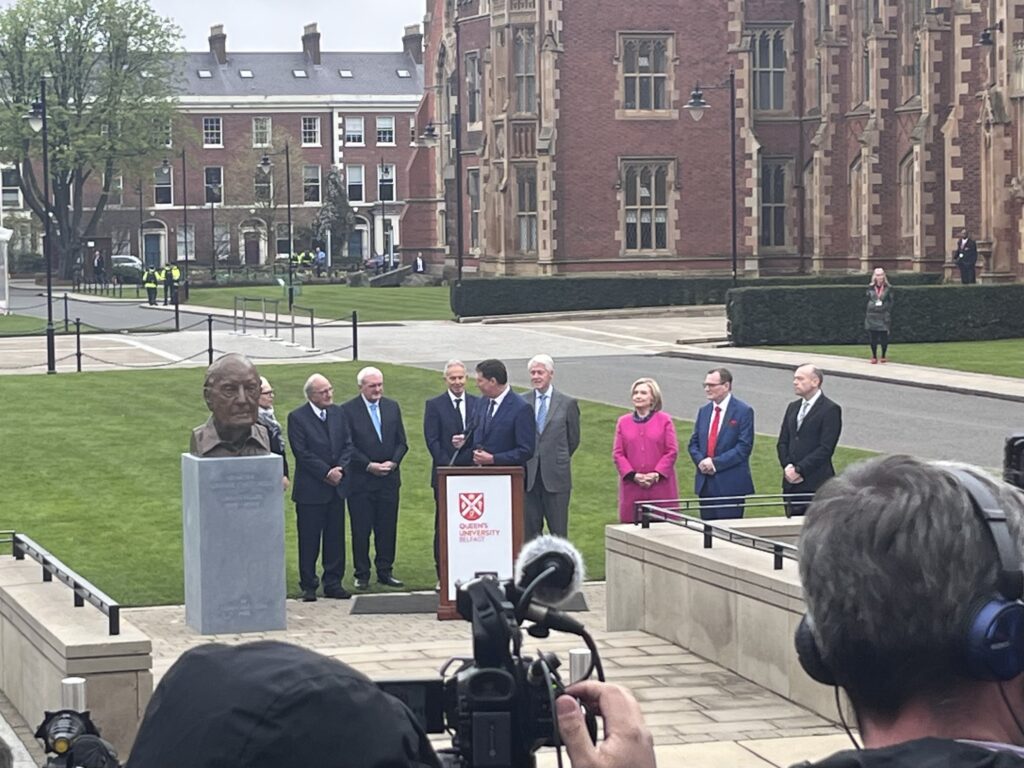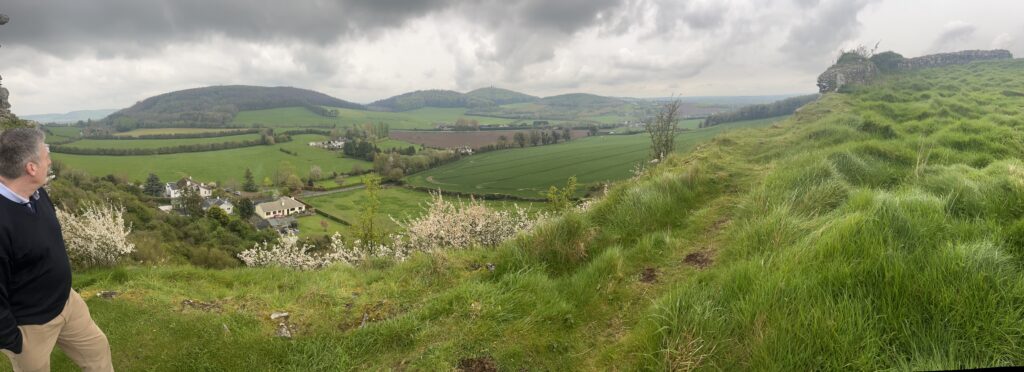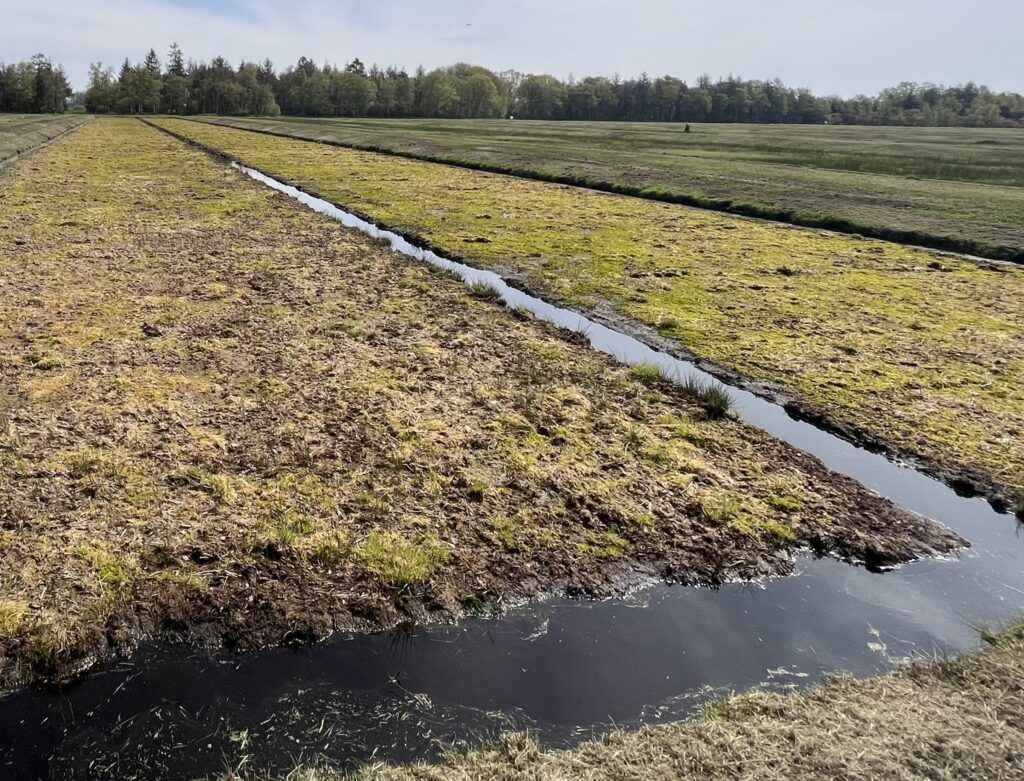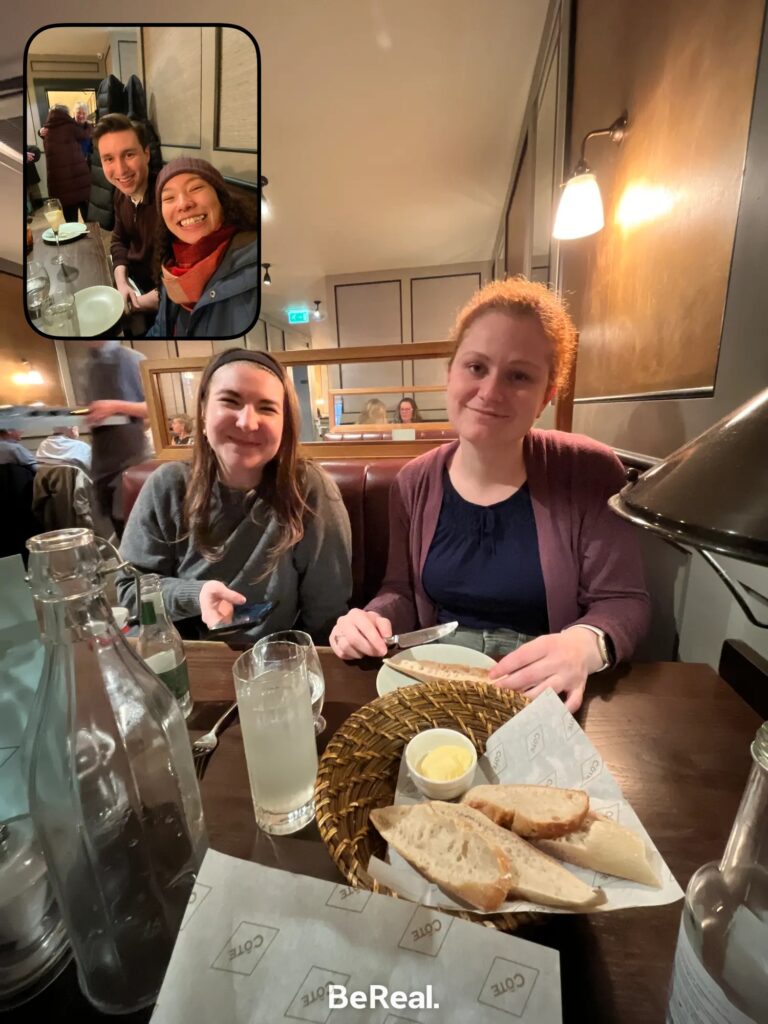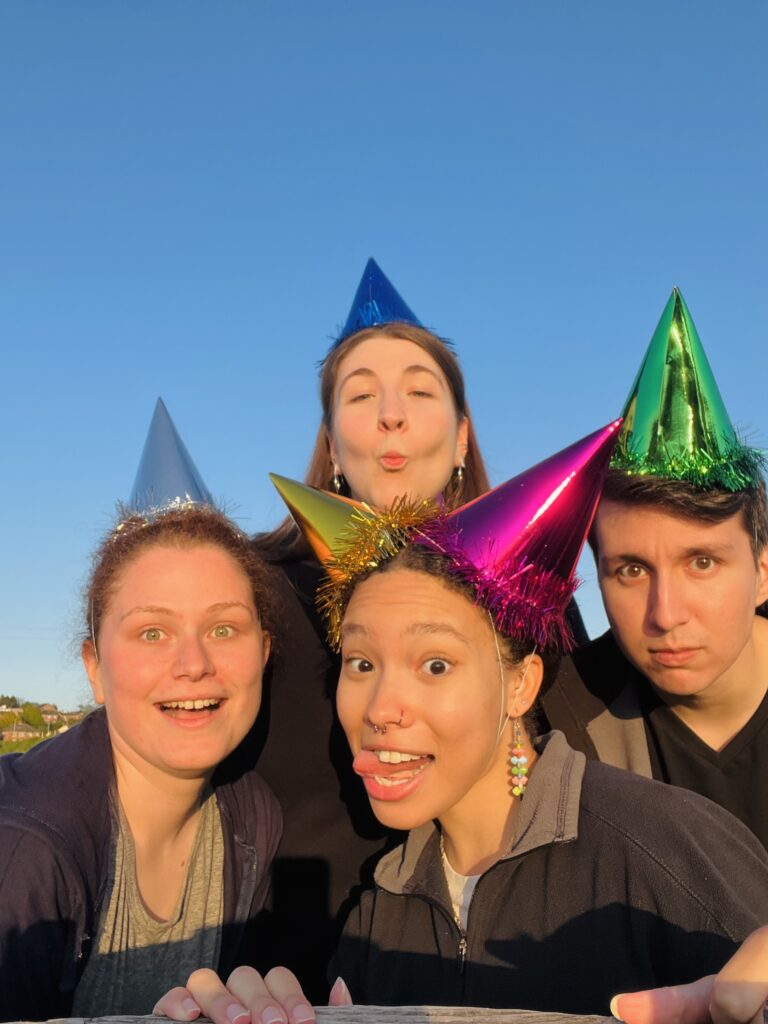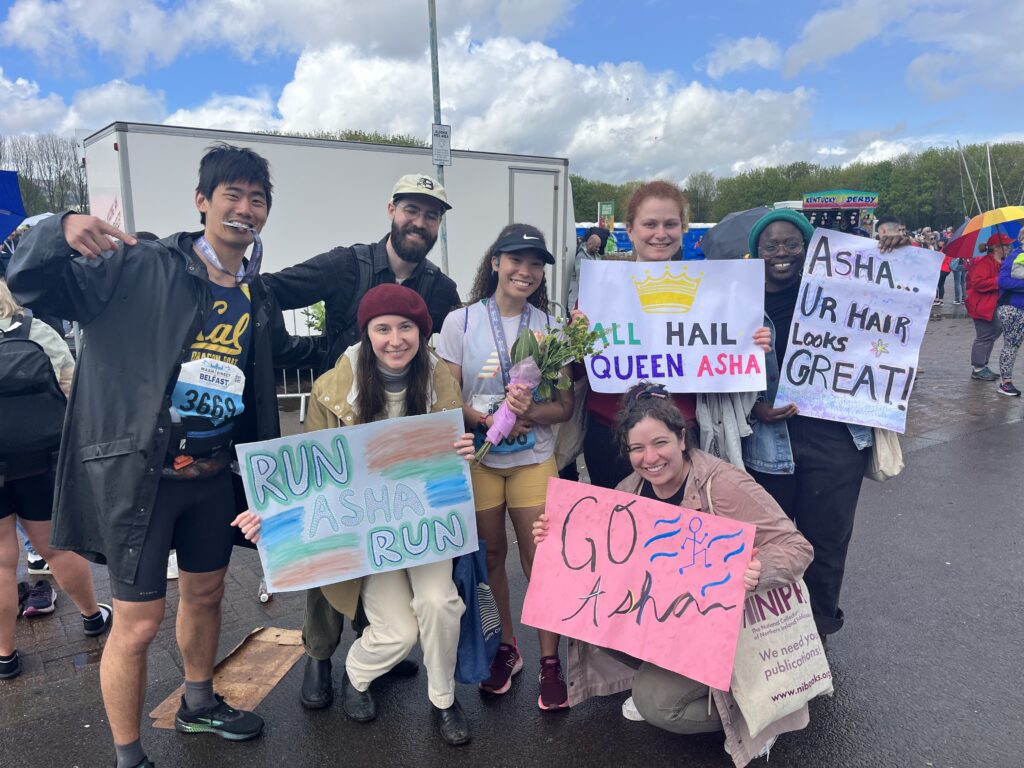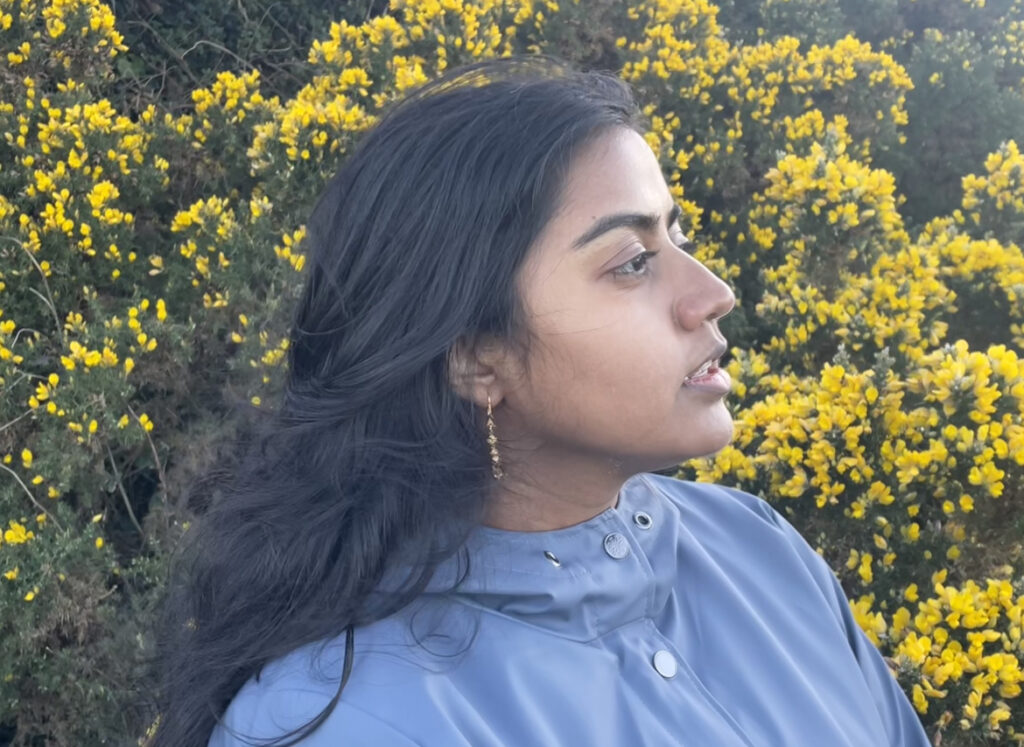When I first stumbled on a webpage for the Mitchell Scholarship two years ago, I initially thought I was ineligible; I thought I was past the age bracket to apply. I was warily nearing 30, deep in the throes of professional burnout, reconsidering my career and desperate for a break from New York, where we had all spent two terrifying years at the mercy of the coronavirus.
I would sneak into the application process just barely under the age deadline; one had to be under 30, to apply, and the deadline was two weeks before my birthday. So, in the class rolls, I’m the “old” Mitchell. I’ve been out of college nearly ten years, left an established life in Brooklyn and took an unpaid leave from my hard-earned career to move to a small, seaside village and go back to college. 22-year-old me would be equal parts impressed and horrified. 31-year-old me wrestled hourly with whether I was an idiot.
It’s difficult for me to grasp how profoundly different life looks now, compared to a year ago. I lived in a Brooklyn studio, surrounded by people but mostly alone. I knew one neighbor in a warehouse apartment complex; I had lived there for five years. My day began before sunrise with Slack messages and ended after sunset, usually the same way. Dating was transactional and soul-crushing. I drank overpriced cocktails at stuffy bars. Outings with friends required weeks of coordination and calendar comparisons. I have warned my younger Mitchells; once you start scheduling catch-ups with your friends via Google calendar, seek help.
Now, I live in a seaside house that feels like some strange mashup of The Dead Poet’s Society and Gilmore Girls. Neighbors and friends stop by and poke their head into the open window of my office. The door is constantly open. A running cast of Mitchells and their friends come and stay; I never know who might turn up on any given weekend. The frenetic, cynical me of two years ago would curdle at this. It’s turned into one of the greatest joys of my life, to spend time with so many young people.
They’re all amazing, but I will selfishly allow myself a few lines to brag, with all the pride of a big sister, about one specific Mitchell: Abby Barton, my first roommate in a decade, the Rory to my Lorelai, the person who has taught me that Gen Z is capable of both complimenting and roasting a fragile Millennial soul in the same sentence (No, I will not give up my skinny jeans). Unshakably principled and scarily self-sufficient, I see so much of who I want to be, in her. She has unintentionally, gently reminded me that cynicism is a copout. It takes a lot more courage to be hopeful and try. She believes she can make the world a better place, and she has reminded me that task is not tackled in broad platitudes — sometimes changing the world is just finding help for one person, in one place, at one time. She believes she can make a difference. I believe her.
I was supposed to go home in September. Instead, I re-upped the lease. Two new Mitchells will move into the spare bedrooms this fall, and we’ll start all over again. I came here for a break from home but I think I may have found a new one.
Twice this week, I took a break from work to go play music in town. It was sunny and warm, buzzing with people, and I set up my treasured Telecaster and played the blues. My friend Aileen walked by, and we stopped to have a coffee. Then came Mia, her husband Cullen and their adorable little boy. Later came Stephen, a friend from the Salthill swim group; we all swim 15 kilometers in the sea every week, and get breakfast together on Sundays. I packed up the guitar and had a beer with my friend Conall, a kindred spirit and fellow jaded journalist. We were standing on Shop Street, saying goodbye, when Abby walked up. Together, we went home and had a last drink at our local pub, where everyone knows our names.
This year — and these kids — have taught me so much. I hope if I’ve taught them anything, it’s this: life is going to be way weirder than you ever think it’s going to be, at 22. When you need an ear or just a place to crash in Galway, the key is in the lockbox.

